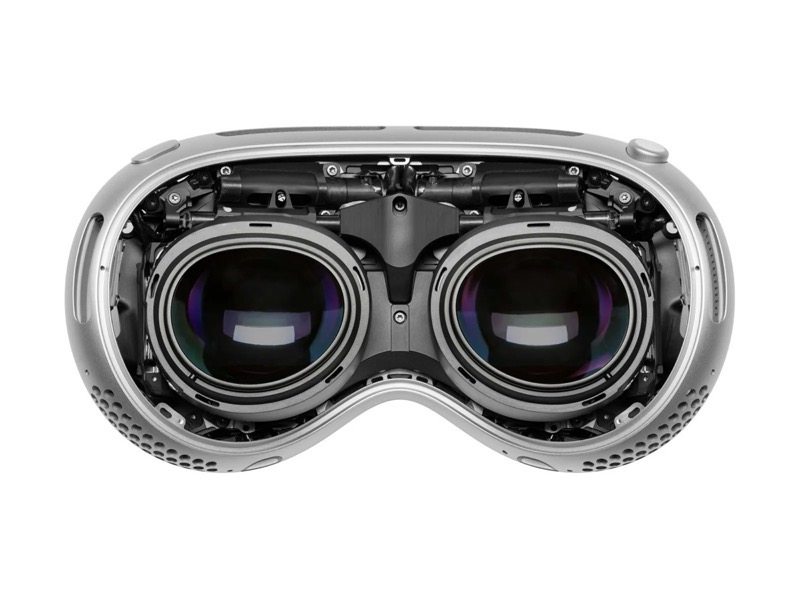When Apple unveiled the Vision Pro, it was clear that the company aimed to redefine how we interact with the digital world. More than just a headset, Vision Pro integrates AR with real-world environments, allowing users to multitask in ways that blend virtual content with physical spaces. Whether it’s for work, entertainment, or communication, Vision Pro was designed to make augmented reality a seamless part of daily life.
However, as with any pioneering technology, widespread adoption depends on consumer perception. Apple’s recent survey indicates that while the Vision Pro holds immense potential, it faces some challenges in translating that potential into mass market appeal.
Survey Highlights: Consumer Expectations and Concerns
The survey conducted by Apple delved into various aspects of the Vision Pro user experience, aiming to pinpoint what consumers find most appealing and where the device might fall short. Early responses highlight a few critical themes:
1. Price Sensitivity
One of the primary concerns raised in the survey is the high price point of the Vision Pro. Priced at a premium level, Vision Pro may be out of reach for many average consumers, especially those who are hesitant to invest in new and unfamiliar technology. Despite its impressive specs, the initial cost could be limiting its accessibility. For Apple, addressing this concern in future iterations—either by offering more affordable versions or adding features that further justify the price—could be key to broader adoption.
2. User Experience
Another significant theme from the survey was the overall user experience. Many respondents praised Vision Pro for its performance in AR environments, particularly for entertainment and creative applications. However, some users felt that the device’s battery life and comfort during extended use could be improved. Apple has often refined products based on user feedback, and it wouldn’t be surprising to see these areas addressed in the next Vision Pro release.
3. Applications and Content
Respondents also highlighted the need for a richer selection of apps and content. While Vision Pro supports various applications, users are looking for more unique experiences that fully leverage the power of AR. This feedback could push Apple to work more closely with developers to create a wider array of AR-centric apps, perhaps even expanding into gaming, healthcare, and virtual collaboration.
Apple’s survey not only focuses on hardware concerns but also explores software and AI integration. Apple Intelligence—the company’s rapidly advancing AI platform—could play a pivotal role in the future of the Vision Pro. By integrating more advanced AI features, Apple could enhance AR experiences, allowing Vision Pro to intelligently adapt to user needs. From contextual assistance to predictive suggestions, AI could bridge the gap between what Vision Pro can do now and the limitless potential of AR technology.
Enhanced Personalization and Gesture Control
One potential area for AI-driven innovation is in personalization. With improved AI algorithms, the Vision Pro could offer a more intuitive interface, recognizing gestures and commands with greater accuracy and adapting its functionality to suit each user’s specific preferences. AI could also streamline tasks, making AR even more efficient for users, whether they’re working on a creative project or simply consuming media.
Apple isn’t the only tech giant pushing into AR. Competitors like Meta and Google are also working on their own AR devices, and Apple’s recent survey seems to reflect a recognition of the growing competition in this space. Learning from user feedback, Apple could look to refine its offering to stay ahead, especially as competitors attempt to roll out their own immersive technologies.
Balancing Innovation with Practicality
While Vision Pro is undoubtedly a leap forward, Apple may need to balance groundbreaking features with practical functionality. Making the Vision Pro lighter, more comfortable, and perhaps even modular could help it appeal to a broader market. Additionally, expanding the device’s functionality beyond entertainment and creative industries—such as healthcare, education, and even real estate—could broaden its appeal.
Apple’s Vision Pro survey reflects a company that is deeply engaged with its user base, seeking to refine its AR offering based on real-world feedback. The next phase for Vision Pro will likely focus on addressing the key concerns raised by users—particularly in the areas of pricing, battery life, and app availability. Apple’s commitment to making AR an integral part of its product lineup is clear, but to fully achieve that vision, the company will need to make thoughtful adjustments based on the feedback it’s receiving.
Are you an Apple Vision Pro fan? Let us know on X!
